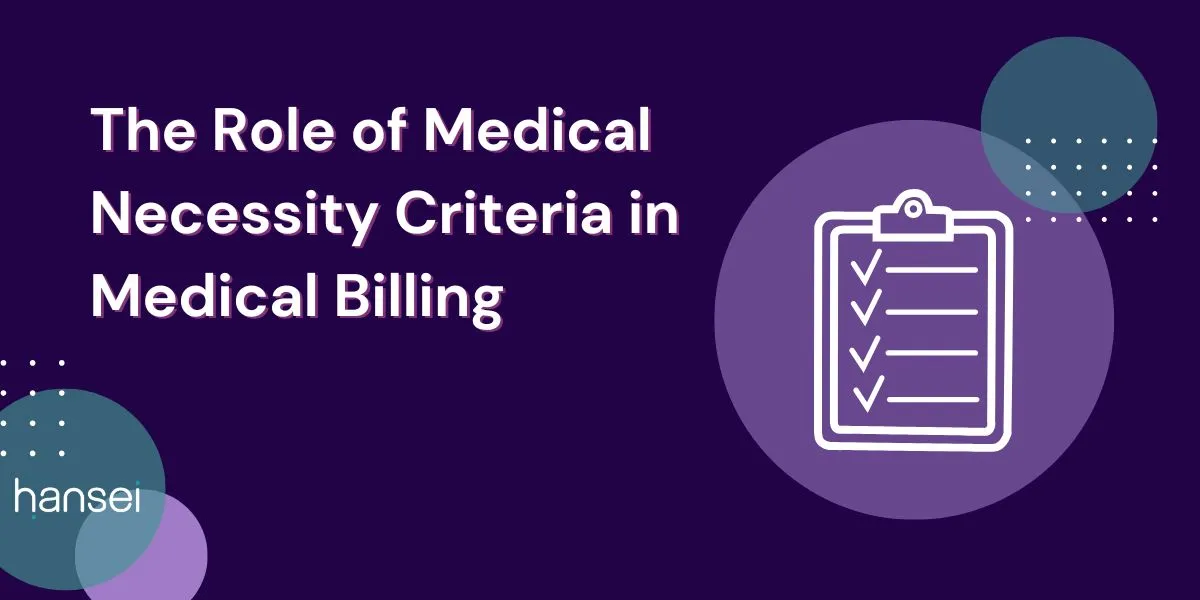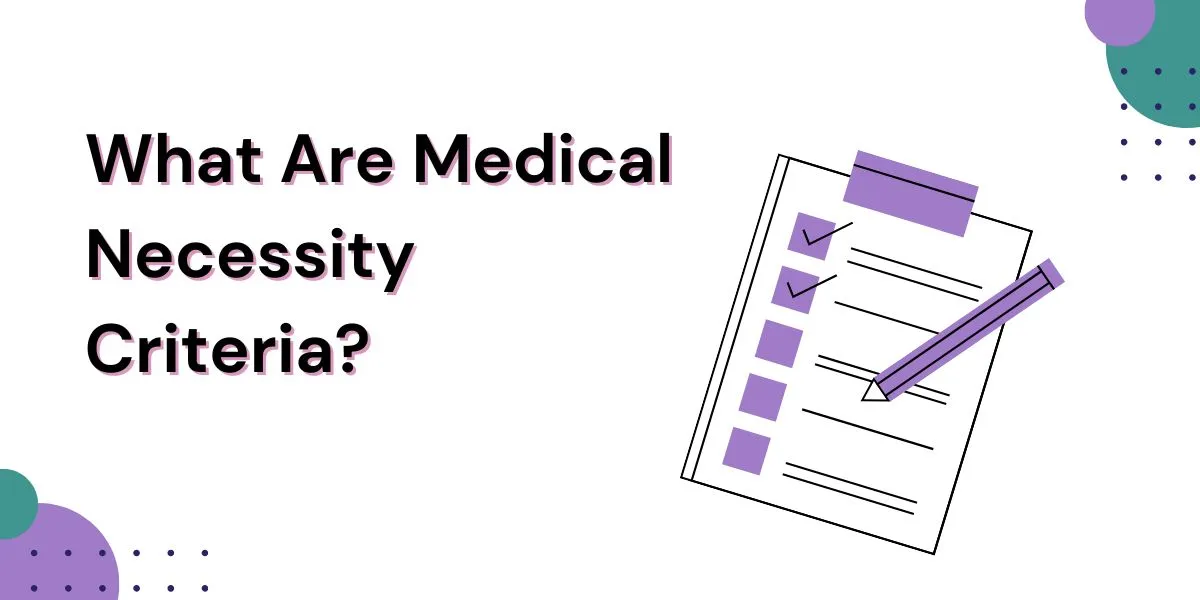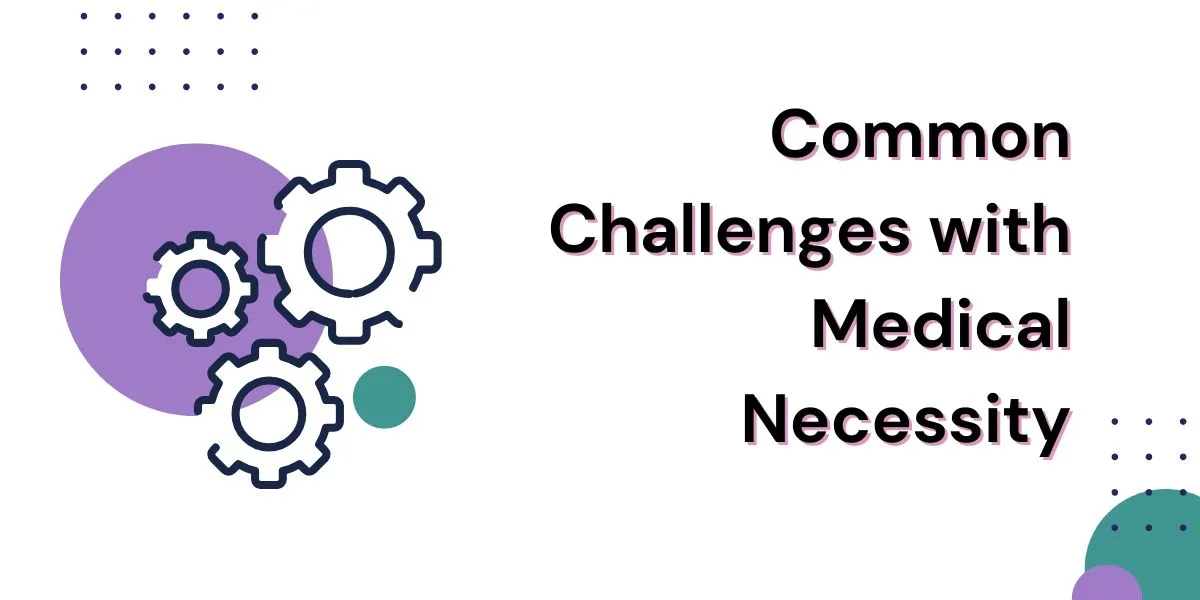Blog

In healthcare finance, few concepts are as important as medical necessity criteria. These criteria determine whether a service, procedure, or treatment is considered reasonable and essential for a patient’s condition. For providers, understanding how medical necessity is applied is critical to ensuring timely reimbursement and reducing claim denials. For patients, it influences whether their care will be covered by insurance. At Hansei Solutions, we work with providers to help navigate this process, minimizing financial stress and keeping the focus on patient care.

What Are Medical Necessity Criteria?
Medical necessity criteria are the standards payers use to decide if a treatment is appropriate, evidence-based, and cost-effective for a patient’s diagnosis. Typically, criteria are based on:
- The patient’s symptoms and medical history.
- Nationally recognized clinical guidelines.
- Recommendations from specialty medical associations.
- The most efficient and least invasive method available for treatment.
If a payer determines a service does not meet medical necessity, the claim is often denied. This makes it essential for providers to document thoroughly and align services with recognized guidelines.
Why Medical Necessity Matters in Billing
The role of medical necessity in billing is twofold: it impacts both the patient’s financial responsibility and the provider’s revenue cycle. When services are deemed medically necessary:
- Patients benefit by having insurance cover most of the costs.
- Providers see faster, smoother reimbursement.
- Payers are reassured that funds are being used appropriately.
On the other hand, if necessity isn’t established, patients may face unexpected bills and providers may experience revenue loss. For this reason, medical necessity criteria serve as a common ground for all three parties.

Common Challenges with Medical Necessity
Even when providers deliver clinically appropriate care, they may still encounter difficulties with payers. Some common issues include:
- Insufficient documentation – If providers fail to submit detailed notes supporting the treatment decision, payers may reject the claim.
- Prior authorization delays – Many payers require pre-approval, which can slow access to care.
- Variation in criteria – What one insurer defines as medically necessary may differ from another.
These challenges highlight the need for providers to stay current with payer policies and maintain strong billing practices.
Hansei Solutions and Medical Necessity
At Hansei Solutions, we specialize in helping providers address the complexities of medical necessity criteria. Our team:
- Reviews payer requirements and updates billing workflows accordingly.
- Trains staff to document care effectively and in line with clinical guidelines.
- Works with providers to reduce denied claims tied to medical necessity.
By bridging the gap between providers and payers, we ensure patients receive needed services without unnecessary financial burdens.
FAQs About Medical Necessity Criteria
Who decides what is medically necessary?
Medical necessity is generally defined by payers, using national guidelines, professional standards, and their own internal policies.
Why do claims get denied for medical necessity?
The most common reasons include lack of supporting documentation, services that fall outside payer policies, or treatments that are considered experimental.
How can providers avoid medical necessity denials?
By aligning services with evidence-based guidelines, maintaining thorough patient records, and working with billing experts to prepare accurate claims.
What role do patients play in medical necessity?
Patients can advocate for themselves by understanding their coverage and asking providers to explain why a treatment is necessary.
How does Hansei Solutions support providers in this area?
We help organizations implement strong documentation and billing practices, reducing denials and strengthening communication with payers.
Making Medical Necessity Criteria a Necessity
The role of medical necessity criteria in medical billing is central to the success of providers and the well-being of patients. When applied correctly, it ensures fair reimbursement, cost-effective care, and improved patient access. Hansei Solutions partners with behavioral health providers to navigate these requirements, streamline billing, and build stronger payer relationships—ultimately keeping the focus where it belongs: on patient health.

Ready to focus on providing healthcare? Let us lighten your load.
We’re here to address your pain points and create growth opportunities for your organization. We’re passionate about what we do, and it shows in every interaction. Learn what makes us tick and schedule a demo today.